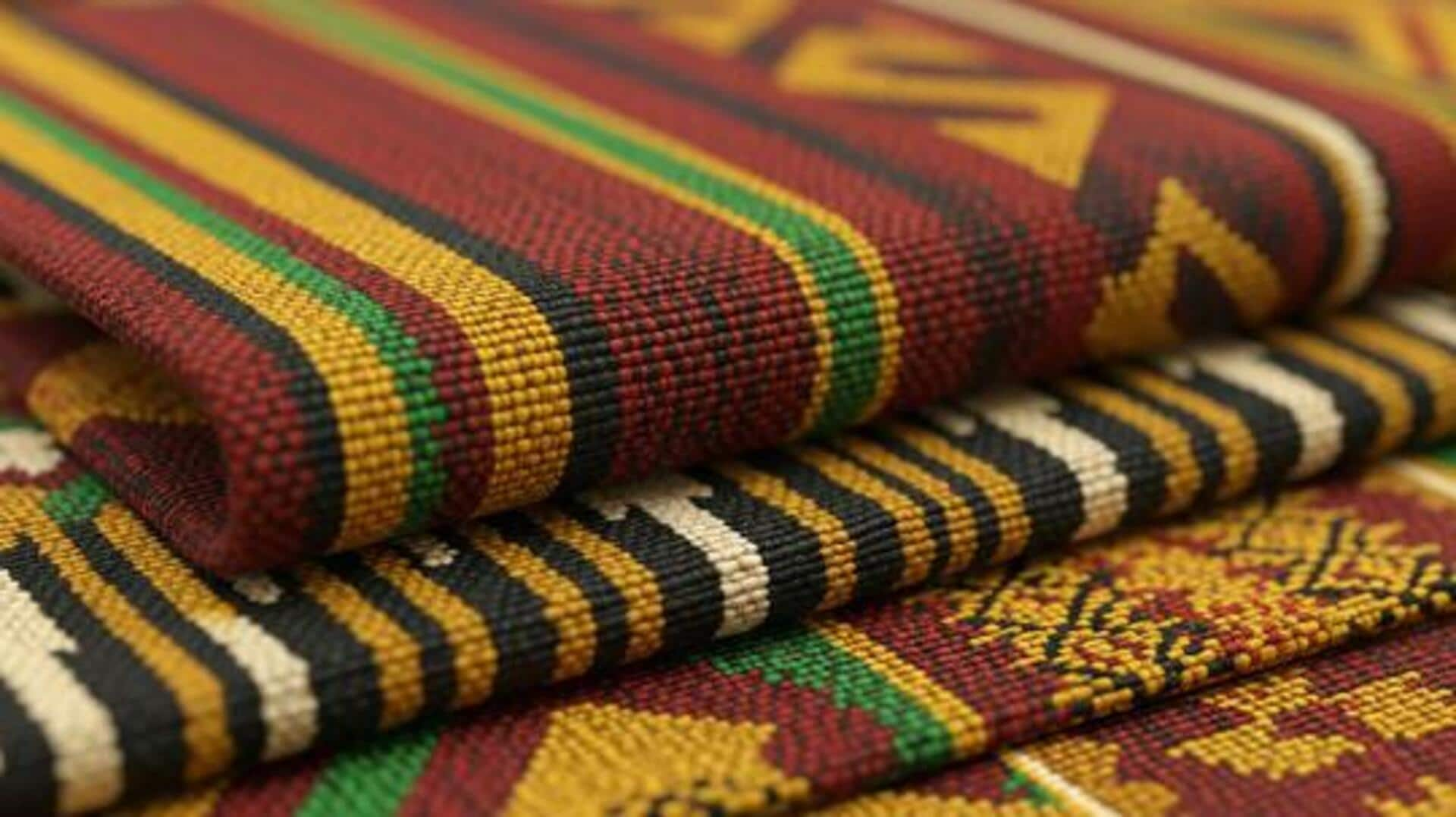
Textile art: Techniques, symbols, and legacy
What's the story
African textile art is a beautiful tapestry of history, culture, and craftsmanship. Passed down through generations, this art form displays the diverse weaving techniques that have stood the test of time. From intricate patterns to vibrant colors, African textiles narrate stories of communities and traditions. Here's a look at some of these timeless weaving techniques that continue to inspire and captivate people across the globe.
Kente weaving
Kente cloth: A symbol of heritage
Kente cloth is one of the most iconic African textiles. Known for its bright colors and geometric patterns, kente originated in Ghana. Each design is imbued with meaning- either historical or proverb-related. Traditionally woven on a loom by skilled artisans, kente cloth was once reserved for royalty but is now worn by many during special occasions as a symbol of cultural pride.
Mud cloth technique
Bogolanfini: The art of mud cloth
Bogolanfini, or mud cloth, comes from Mali and is dyed using fermented mud in a unique process. The fabric is handwoven and then dyed with natural elements like leaves and bark. Patterns are painted with mud to create symbolic designs that often represent historical events or social status. This technique emphasizes the resourcefulness and creativity that is inherent in African textile traditions.
Indigo dyeing
Adire: Indigo-dyed textiles
Coming from Nigeria, adire textiles are famous for their indigo-dyed patterns. Using resist-dyeing methods like tying or stitching fabric before dyeing, artisans create intricate designs on cotton cloths. Adire has evolved over the years, with modern interpretations adding new motifs, but keeping traditional techniques intact. This is a combination of both continuity and innovation in African textile art.
Raffia weaving
Kuba cloth: Raffia weaving mastery
Hailing from the Democratic Republic of Congo, kuba cloth is a spectacular example of raffia weaving with palm fibers. While men do the weaving on looms, creating intricate patterns, women do the finishing touches, like shell or bead embellishments. This collaboration across generations keeps things authentic, yet modernizes to suit contemporary tastes. It is globally recognized, thanks to efforts to preserve cultural heritage.